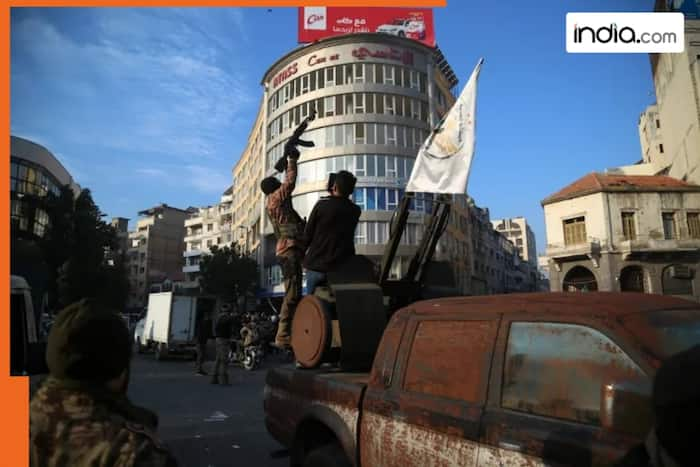Sweida was liberated on Saturday.

New Delhi: Sunday, December 8 was a huge turning point in the history of Middle East, and Syria as the incumbent president Bashar al-Assad had to flee the country with his family, ending 50-year- rule of the al-Assad family reign as the rebel opposition forces took complete control of Damascus.
The rebel’s offensive that started on November 27 ended in a matter of just 12 days. Opposition forces led by Hayat Tahrir al-Sham (HTS) launched an assault from their base in the Idlib governorate in northwestern Syria and then rolled on southwards to oust Bashar al-Assad.
This is how the final 48 hours unfolded
On December 7, the rebels closed in and surrounded the capital Damascus while the other part of the group captured most of the southern Syrian region of Deraa. Deraa is the same place where the first spark of the uprising ignited in 2011.
Within no time, the civilians also joined the fight and along with the insurgents marched north, as reported by political analyst and activist Nour Adeh.
Sweida, which was under the control of Druze factions, was liberated from regime forces on Saturday morning, December 7. As the southern groups headed north, the fighters in northwest fighters closed in on Homs, the next big city on the highway to the Syrian capital Damascus.
By this time Assad realised that it was game over for him as the intelligence reported that the opposition forces have approached from all sides, leaving no room for any resistance by the regime.
The armed forces realised it too and the soldiers laid down their arms and uniforms. Many fled on foot from their positions. It was a meek surrender, an organisational collapse, according to Sanad, Al Jazeera’s digital investigation agency.
It was the moment of the awakening of the masses and they started widespread demonstrations in the rural areas surrounding Damascus. Many protesters tore down posters of al-Assad and attacked military positions.
December 8: The final 24
In a last-ditch effort, the government bombed the Rastan Bridge without success and as a result, opposition forces captured Homs in the wee hours of Sunday. Homs was liberated.
Assad was cut off from his coastal strongholds where two Russian military bases are located. The fall of Homs was the final bell.
The final and the most important destination, Damascus witnessed a huge furore with armed opposition groups closing in from all directions.
The military operations room deployed the Red Crescent division, specially trained for urban assaults, while many government forces were told to withdraw to Damascus International Airport and the security centres in central Damascus, but to no avail, reports Al Jazeera.
Then, the fighters announced that they had taken control of Damascus’s Mezzeh Air Base, a strategic and symbolic win because the base was used by the government for rocket attacks and air raids against opposition-held territory throughout the war.
It was followed by the Umayyad Square and within two hours, footage emerged from Umayyad Square in the heart of Damascus, showing citizens celebrating as opposition forces entered the capital unopposed, with celebratory gunfire and chants signalling the fall of al-Assad.
On the morning of December 8, Syria was announced as “free” and by 6am, the fighters declared Damascus liberated, confirming that Bashar al-Assad had fled the country.
Wasting no time, people ripped apart the symbols of Assad’s rule.
David Des Roches, an associate professor at the Near East South Asia Center for Strategic Studies, attributed the success of the offensive to the “lack of morale and leadership” in the “demoralised, poorly led, poorly equipped, thoroughly corrupt” Syrian Army, reports Al Jazeera.
After announcing the liberation of Syria, the rebel fighters liberated thousands of prisoners from Sednaya. They are said to have been imprisoned since the Syrian uprising began in 2011, or earlier.
Sednaya is said to have been established in the early 1980s in a place north of Damascus where the al-Assad family detained opponents for decades.

